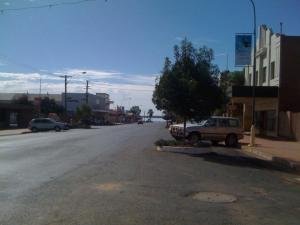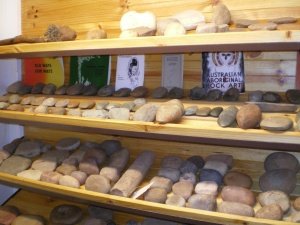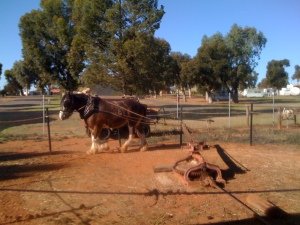Amanda Atkinson
Lake Cargelligo is a small remote town in the central west of New South Wales. Driving into the town, the welcome sign indicates a population of 1500 but spend a week there and you will soon realize about half that amount of people still live there, many left during the drought years to look for work elsewhere.

Lake Cargelligo in the central west of New South Wales
The Lake Cargelligo & District Historical Society museum boasts far more of interest than your average small town historic museum. Situated in a very large and well-presented shed at the back of the Lake Cargelligo township, a small number of locals take pride in their extensive collection of artefacts from the 19th and 20th centuries. These are interesting enough on their own, but hidden at the back of the museum, in a small glass display cabinet that most people walk past, is the really exciting stuff. Well, exciting for any archaeologist who likes stone tools.
One rainy day back in 2010, a small team of colleagues and I were working on a pipeline project for the local council. We did what any archaeologist would do on a rainy day- we went in search of more archaeology! To our surprise and joy, the local historic museum houses an extensive collection of Indigenous stone tools collected over many years, from the local area. The collection includes everything from blades, points, grinding implements, flakes to ceremonial stone sculptures, lying uncatalogued in dusty boxes.

A sample of the artefacts on display at the Lake Cargelligo museum
An off-hand comment made during a meeting in early 2012 about the need to record the collection made me realise that this was something I could do as part of the Flinder’s Cultural Heritage Practium (ARCH 8515). After discussions with the members of the Lake Cargelligo & District Historical Society, we decided that, along with the recording and cataloging of the collection, they needed a new display which shows off this fantastic collection.
My project will focus on a new interpretive display which recognises the needs of both the Historical Society members, the local Aboriginal community and visitors to the museum. There are other interesting challenges associated with the project. Firstly, the new display will still need to fit into its existing display case, which is one of my major challenges. Secondly, I have limited funds to make the new display, which requires ingenuity and a lot of help from the Lake Cargelligo community.
On the June long weekend (the 9th, 10th and 11th June), the museum hosted its annual open weekend, where members of the Historical Society opened the museum to the public and offered special events such as horse demonstrations using a traditional plough, rope making and other traditional activities. However, this year, there was also an opportunity to “Meet the Archaeologists”. Myself and the same group of colleagues who first visited the museum in 2010, were invited back to the museum where this project first started to discuss archaeology with the public.

A working horse display during the Open Day 2012. Using original historic grinding equipment to grind grain.

